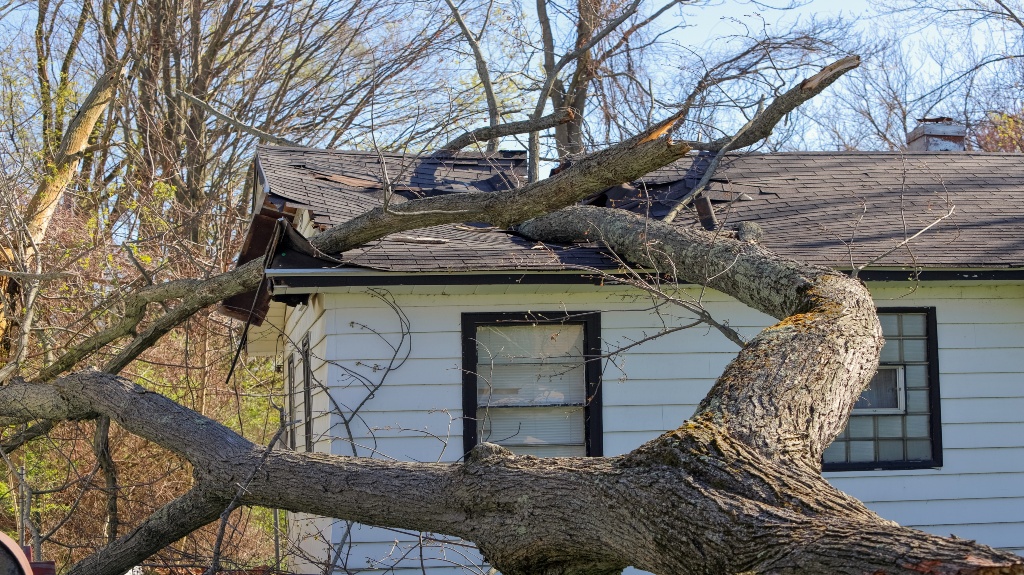How to Handle Property Damage Claims After a Texas Storm
Texas experiences a fair amount of severe weather, particularly in the storm season, which can bring intense winds, flash floods, and even tornadoes. All of these different conditions have the ability to cause thousands of dollars in damage. While it can be a stressful and upsetting experience, when property damage occurs from a storm, it is important to take action immediately. In this blog, we will go over the steps involved in how to handle property damage claims after a Texas storm in order to ease some of the stress involved in an already stressful situation.
1. Assess the Damage Immediately
The most important thing to do immediately after a storm is to make sure that you are safe. If any powerlines are damaged or any severe flooding, you may need to wait for emergency services to arrive before returning to the site of the damage. Once it is determined it is safe to reenter, you can start to assess the damage. It is important to immediately take detailed records of all of the damage that occurred in the storm. One of the best ways to do this is through pictures and videos. Written notes can also be helpful with identifying the types of damage to distinguish between minor repairs like broken windows and major structural issues such as roof damage.
2. Contact Your Insurance Company
Once you have gathered all documentation regarding the damage, you should contact your insurance provider. Make sure you have your policy number ready and provide a detailed description of the damage. It is also highly recommended that you keep records of all communications between you and your insurance company, such as who you spoke to, when, and what was spoken about.
3. Review Your Insurance Policy
Many people are unaware of what their insurance policy covers, which is essential when filing a property damage claim. You should take time to understand the following:
- What’s covered: Does your policy cover wind damage, flooding, or only one type of damage?
- Deductibles: Most policies have a deductible, which is the portion of the repair costs you’re responsible for before the insurance kicks in.
- Coverage limits: This is the maximum amount the insurer will pay for damages.
4. Work with an Adjuster
After you have filed the claim your insurance company will send an adjuster to inspect the property and assess the damage. Adjusters inspect the damage and play a key role in determining how much compensation you will be getting for your damage. Make sure that you are present during the inspection so you can be sure that the adjuster sees all of the damage that occurred and that nothing gets overlooked. If you’re unsatisfied with the insurance company’s initial assessment, you can get a second opinion from a public adjuster, an adjuster than you hire yourself.
5. Get Estimates from Contractors
It is also a good idea to get estimates from reputable contractors to get another opinion of the types of repairs needed. This not only gives you an idea of a fair price but can also be useful in negotiating with your insurance company if their offer seems too low. It is important to be aware that there are often scammers involved in this business. Make sure you are checking contractor’s licenses before hiring them.
6. Negotiate the Settlement
If the insurance company’s settlement is not enough to cover the repair costs, you can negotiate. Here are some tips for negotiating a settlement:
- Provide additional documentation: If there are differences between the insurance adjuster’s assessment and the contractors’ estimates, make sure to show this.
- Consider hiring a public adjuster: A public adjuster can negotiate on your behalf if you feel the insurance company isn’t offering a fair settlement. They work for a percentage of your final settlement but can often secure a significantly higher amount.
In some cases, you may need to seek legal assistance to receive a fair settlement.
7. Finalizing Repairs and Claims
Once a settlement has been reached, the repairs can begin. During the repairs process, make sure to monitor that the contractors are doing high-quality work and that repairs are completed as agreed. If additional damage is discovered during the repair process, you may need to file a supplemental claim. This is something that can be done when the full scope of damage isn’t revealed until work begins. Finally, once all repairs are completed, confirm that all payments have been made to contractors and close out the claim with your insurance company.
Contact The Law Office of Sandy McCorquodale P.C. Today
Dealing with property damage after a Texas storm can be a stressful experience. By documenting the damage, understanding your policy, working with your adjuster, and negotiating for fair compensation, you can repair your property and ensure you receive the settlement you’re entitled to. Facing the aftermath of a Texas storm? You’re not alone. The Law Office of Sandy McCorquodale P.C. is here to guide you through the legal complexities. Contact us today for compassionate support and expert representation.
